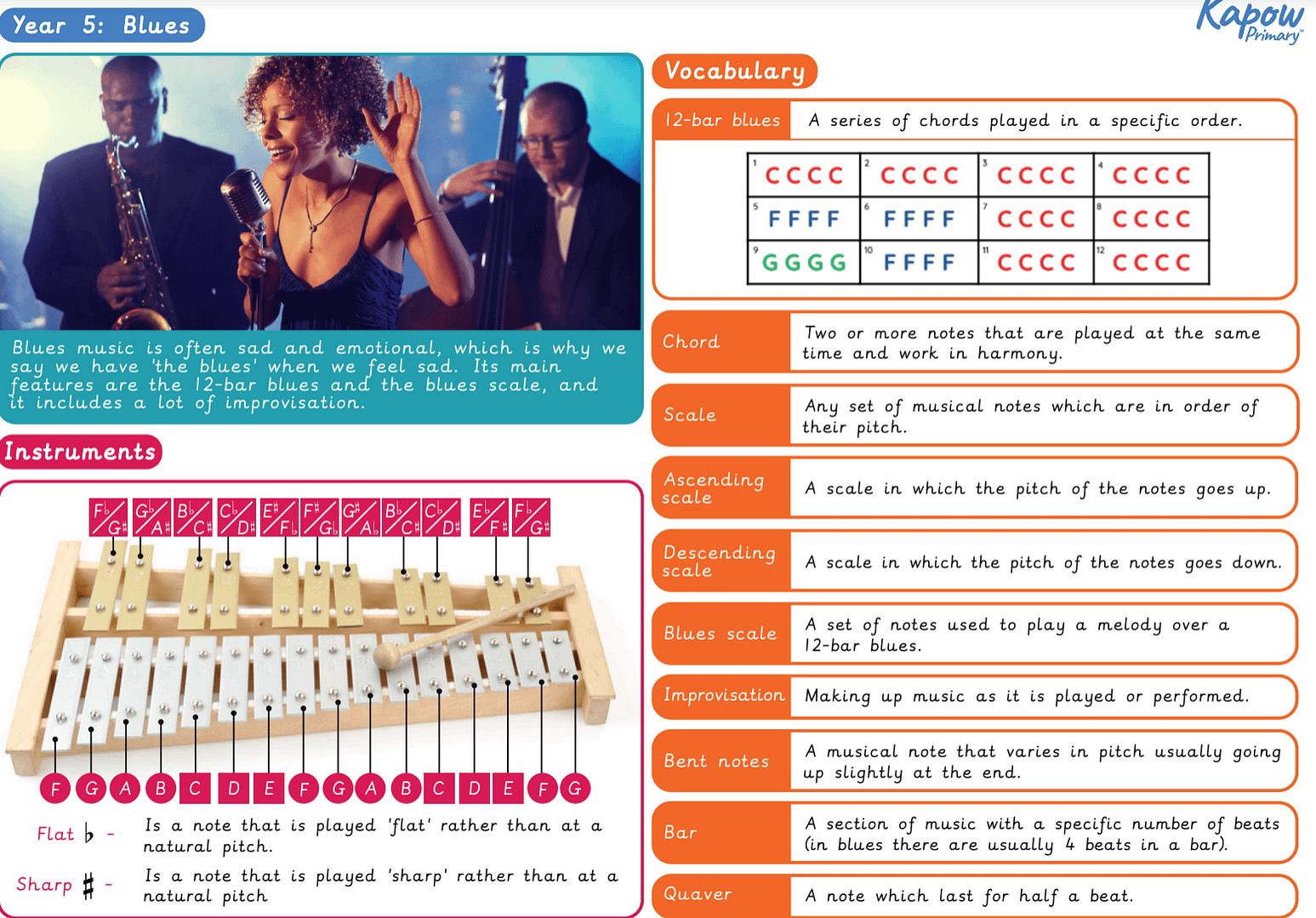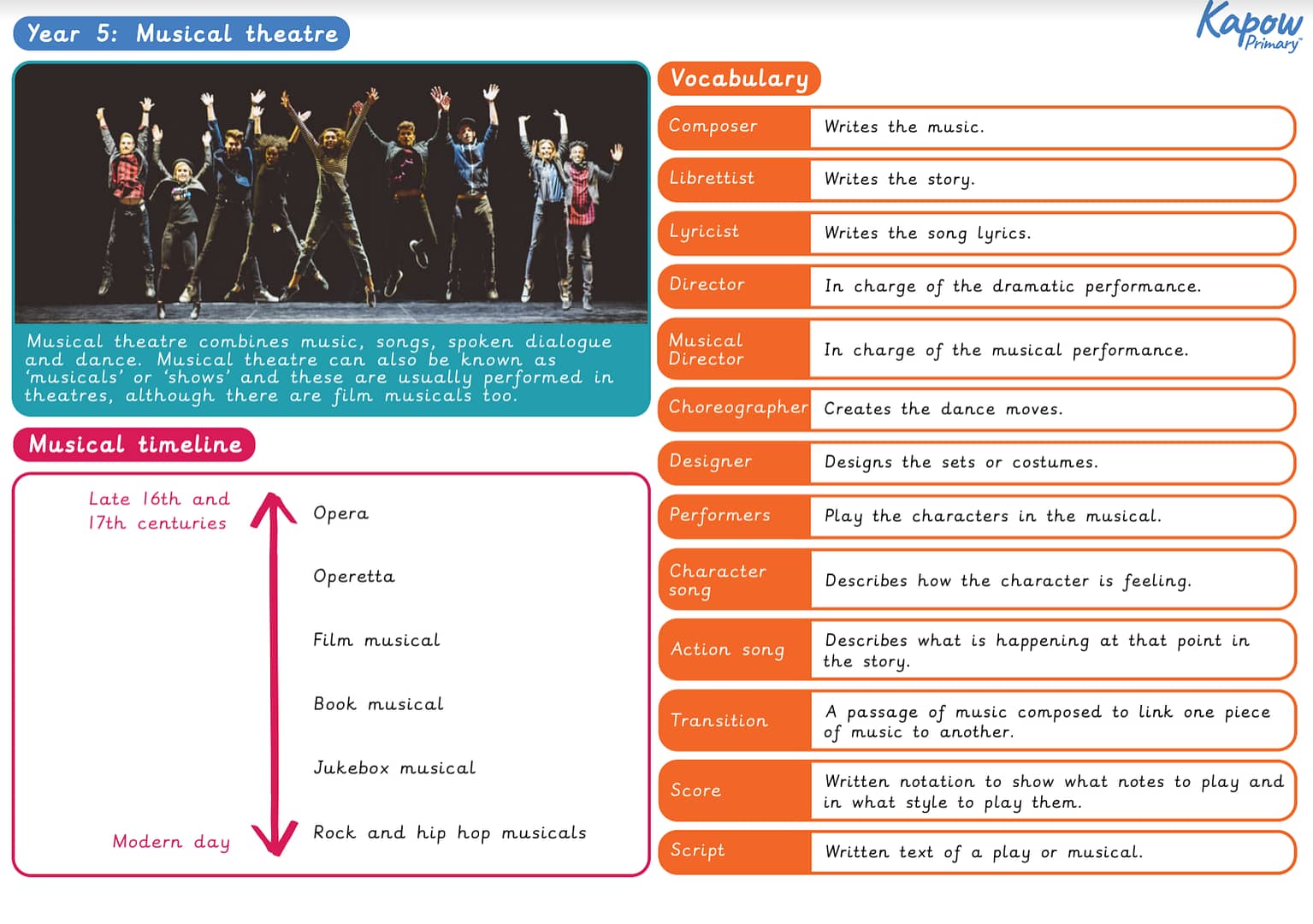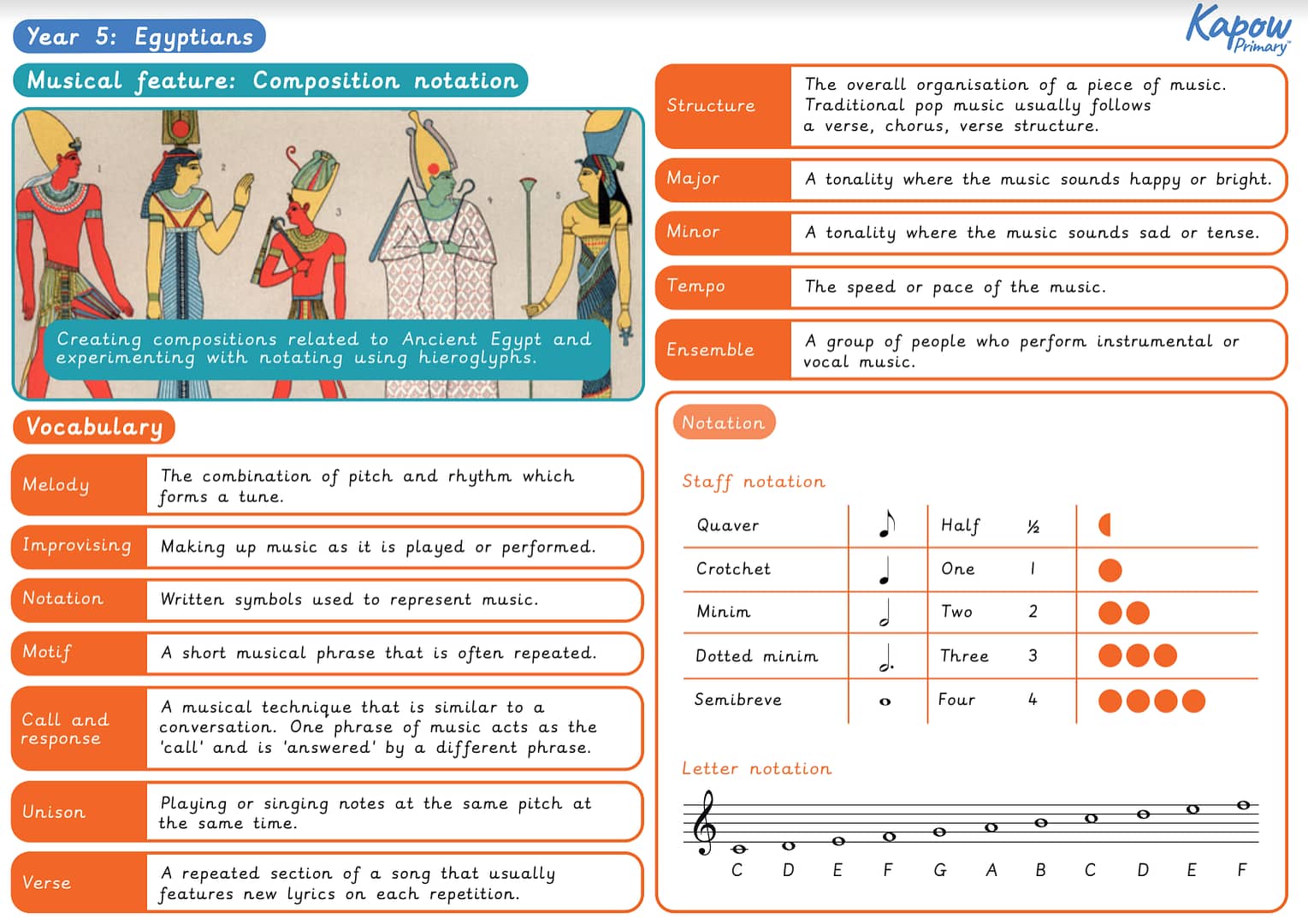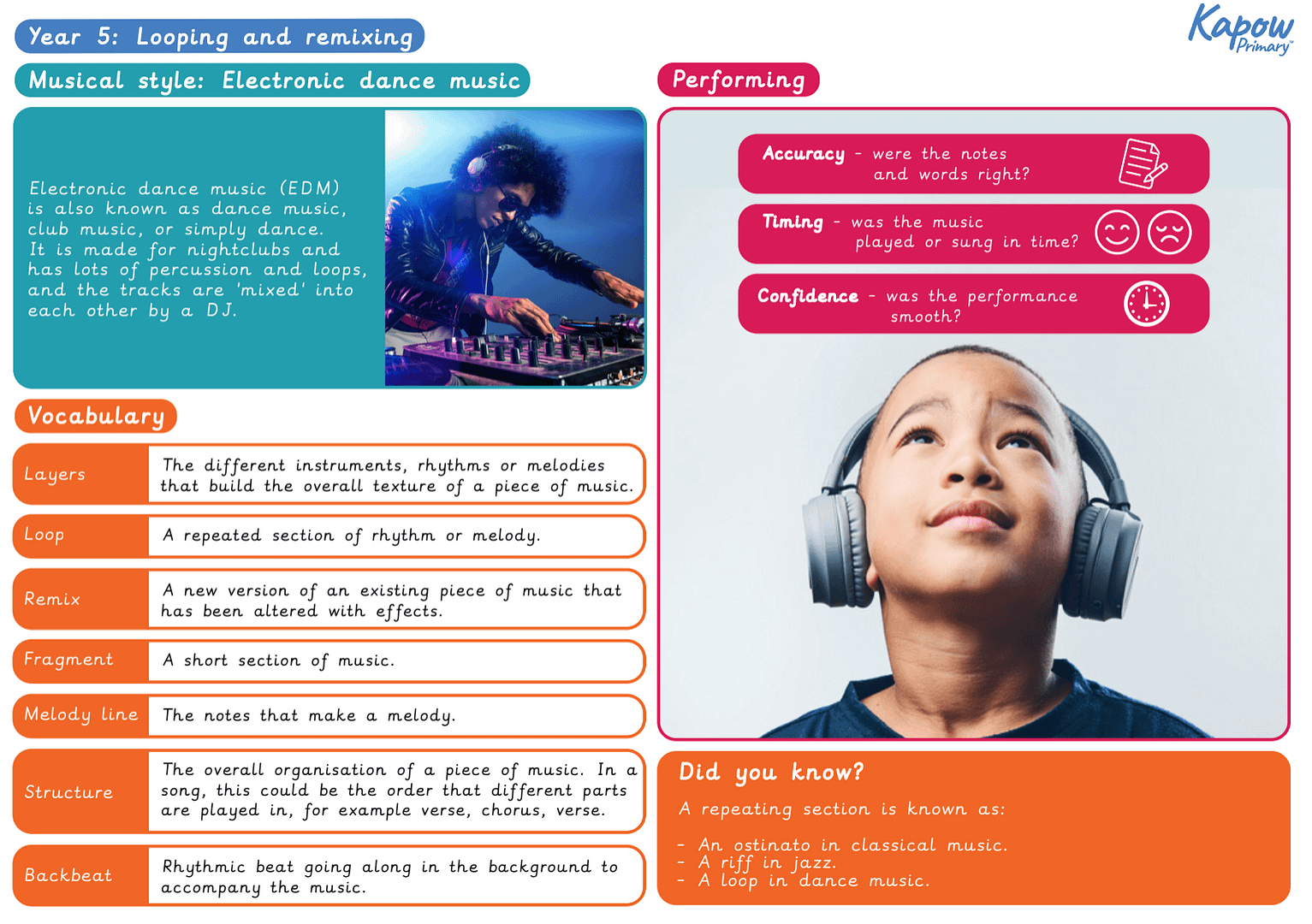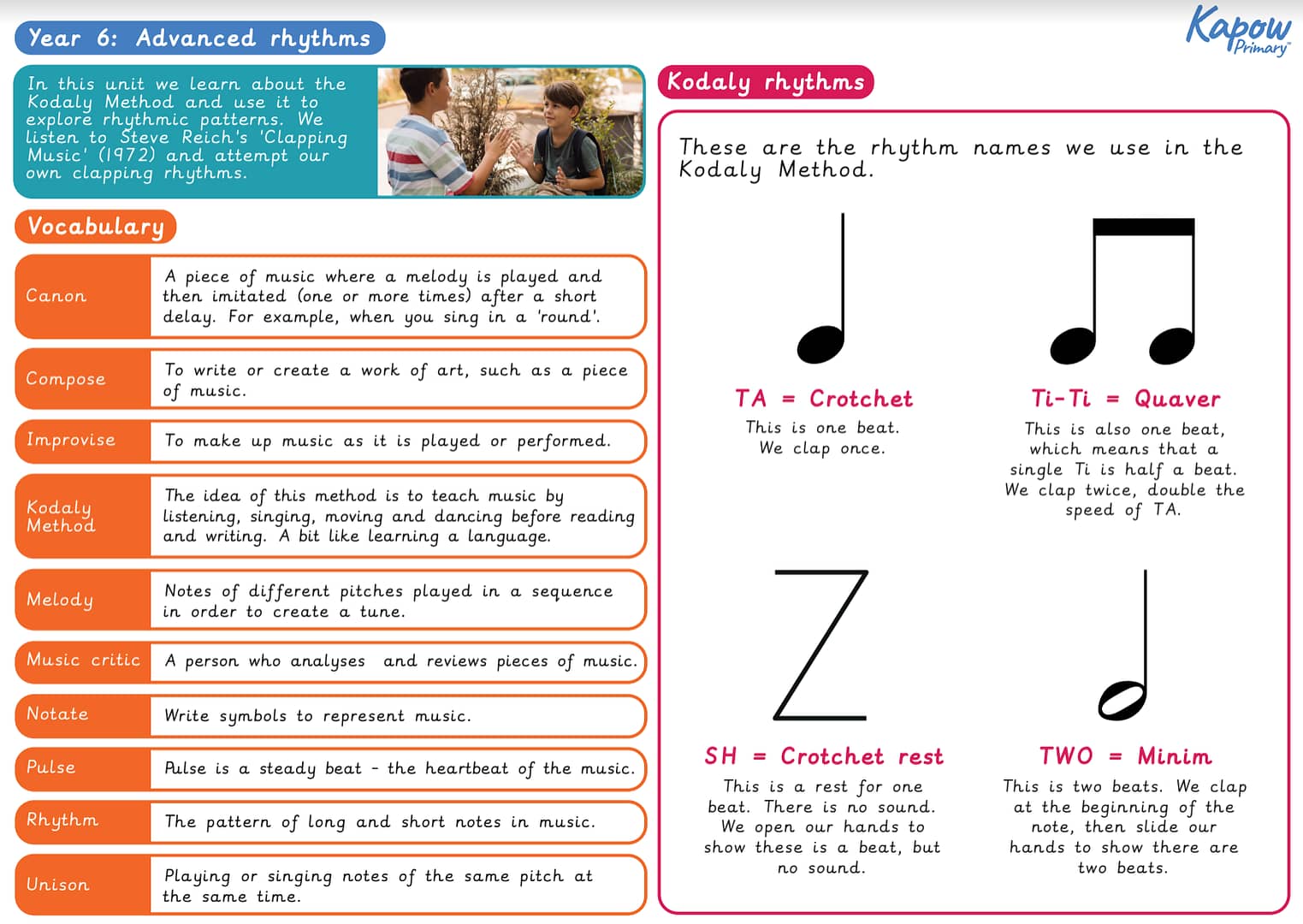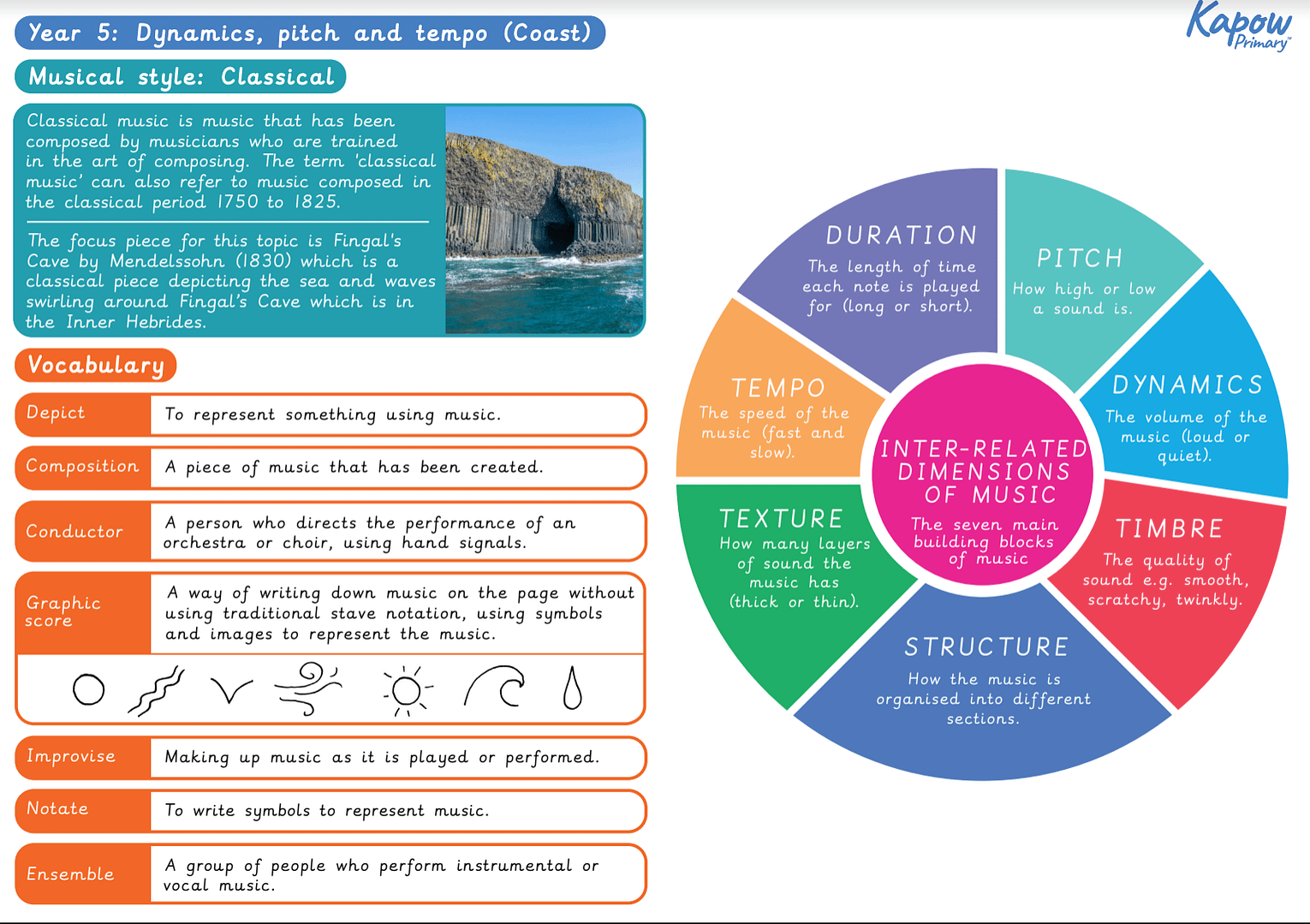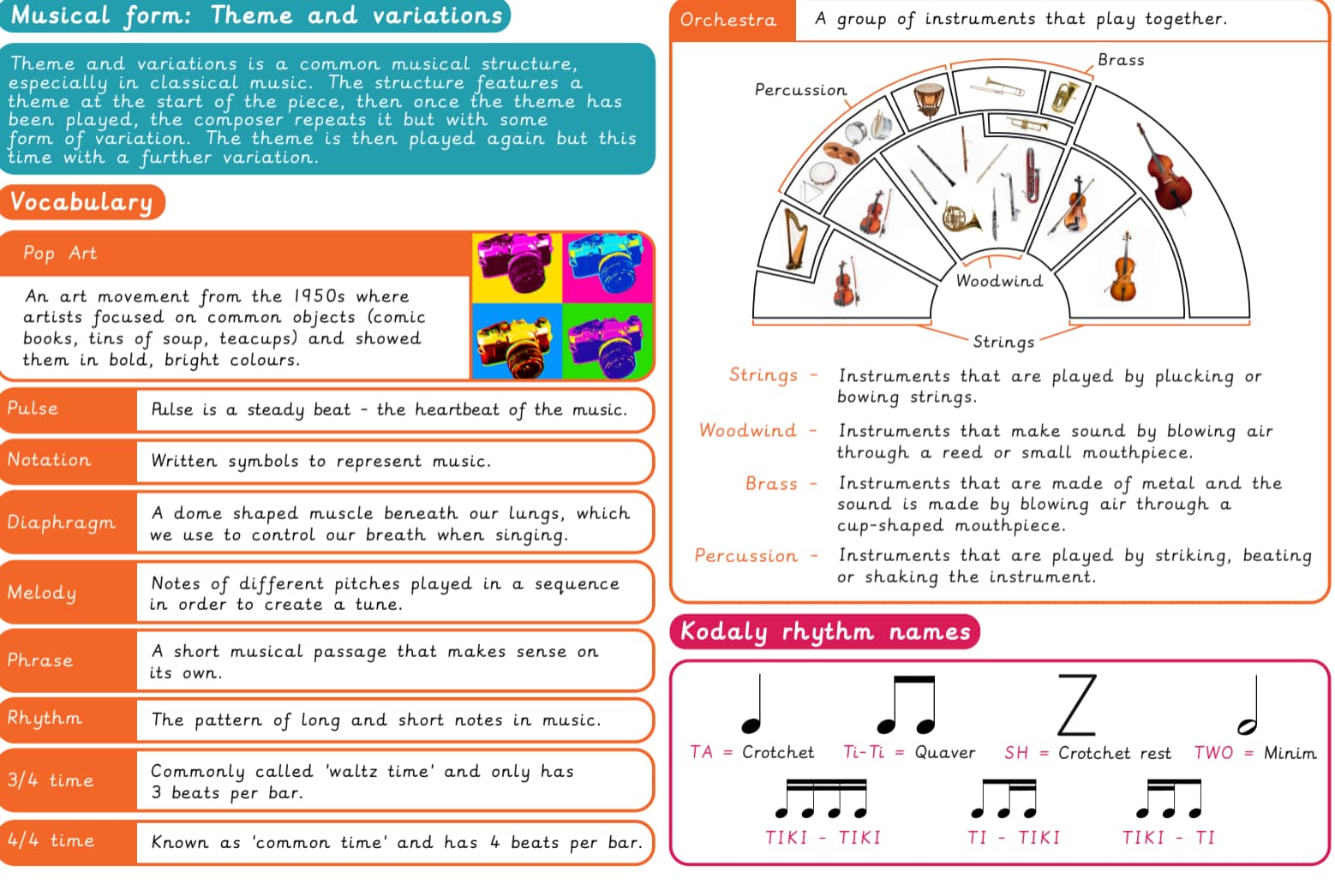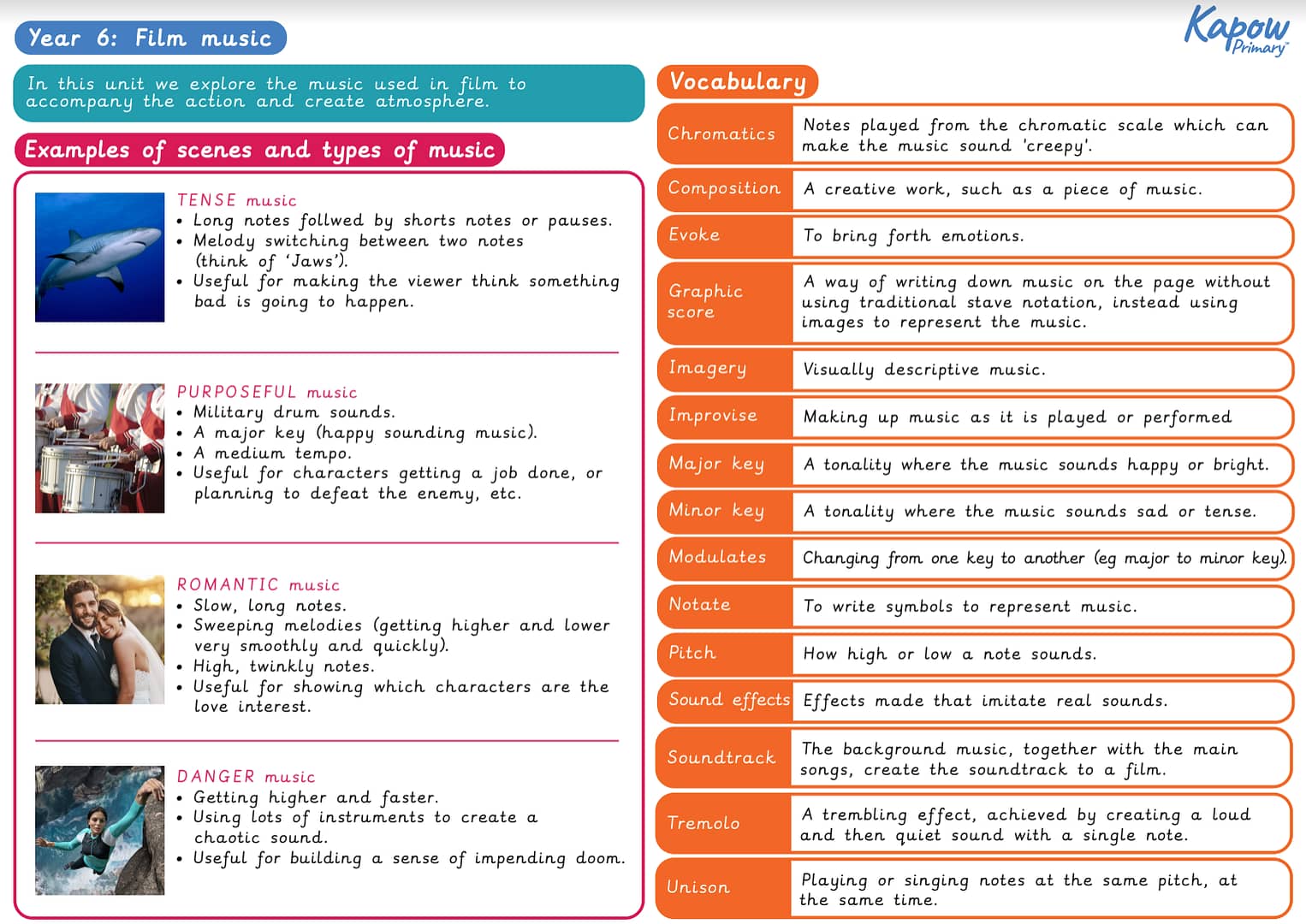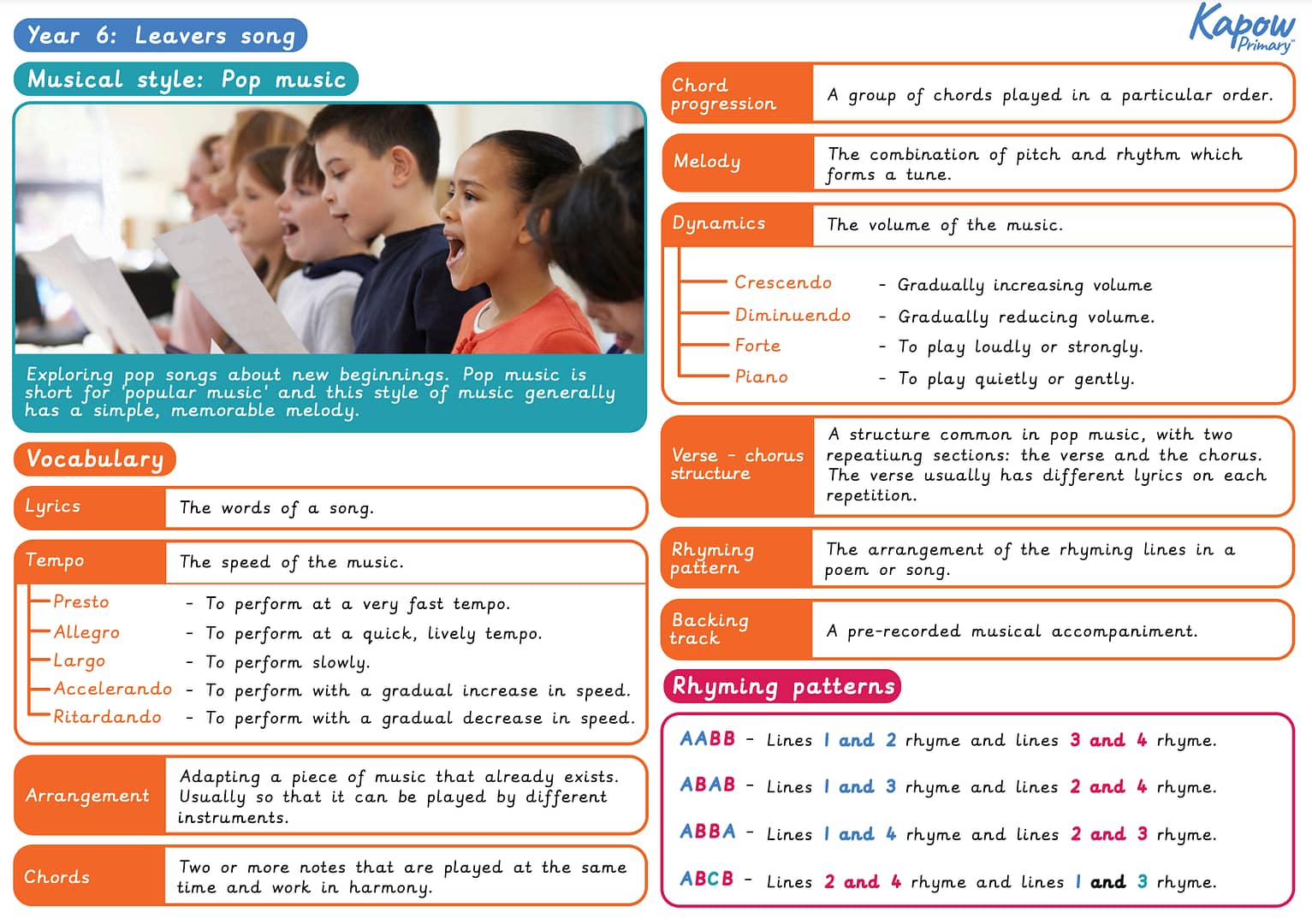Featured Document Type: Knowledge organiser
Knowledge organiser: Music Y5 – Musical theatre
Knowledge organiser: Music – Y5 Composition notation
Knowledge organiser: Music – Y5 Looping and remixing
Archived unit: Knowledge organiser: Y6 – Music: Advanced rhythms
A Knowledge Organiser that captures the essential knowledge and skills learnt throughout the unit Archived Unit: Advanced rhythms.
This unit introduces pupils to the Kodály Method, emphasizing learning music through listening, singing, movement, and dancing before reading and writing. Pupils explore rhythmic patterns using Kodály rhythm syllables such as ‘TA’ (crotchet), ‘Ti-Ti’ (quavers), ‘SH’ (crotchet rest), and ‘TWO’ (minim). They engage with Steve Reich’s ‘Clapping Music’ (1972), experimenting with clapping rhythms and canons to develop their understanding of pulse and rhythm. Through these activities, pupils enhance their improvisation skills and deepen their appreciation of complex rhythmic structures.

